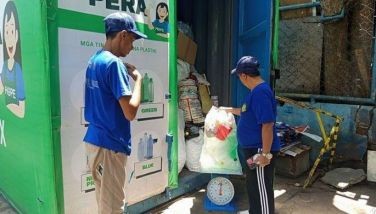Timing vs time in the market
As of this writing, the PSEi ended at 7,322 or down 6.3 percent for the year. With all the risks investors face and the COVID-19 virus on top of people’s minds, maybe you should think twice before investing. Why not wait and just let things settle for a while and then consider investing when things are better?
Investor Interest
Among other concerns, foreign investors’ attention has been diverted to China when it was included in the basket of global stock market indices last year. Being a large market, China’s share effectively resulted in a reduction of other country weights in global investment portfolios.
The Philippines’ share was reduced to a mere 0.9 percent of global emerging market funds benchmarks -- practically insignificant on any foreign investor’s portfolio. Foreign investors have been net sellers in the Philippines, adjusting weights to favor much larger markets. Another major issue is the COVID-19’s global effects on business and trade, further adding to investors’ concerns. Apple, Inc. (NASDAQ:AAPL), for one, already announced that it would not meet analyst expectations due to supply constraints coming from China.
Meanwhile, local investors are generally on a wait-and-see status. Economists and analysts are still in the process of downgrading their forecasts starting with the macroeconomic picture down to company earnings on account of the virus’ negative effects. Volume sales are expected to drop and business confidence will remain weak. Some local retailers and establishments report substantial declines in revenues during the height of the virus scare.
Time in the market
Putting things on a larger perspective however, history has shown that the stock market remained resilient and even generated decent average returns for investors despite all the negative developments in the past. The country went through all sorts of challenges ranging from political issues, calamities – self-made or natural – and even financial crises, among others. But if you invested in a basket of companies representing the stock market index in 2009 and kept it for 10 years until the end of 2019, you would have generated a compounded return of 9.86 percent. Your P10,000 invested back then would have grown to P25,601. And that does not even include the dividends you would have earned and the reinvestment returns on those dividends through those years. (See Figure 1)

Looking further back, if you invested in the stock market with the same basket of companies representing the index in 1987 and kept it for 33 years until the end of 2019, you would have generated a compounded return of 9.11 percent. Your P10,000 invested back then would have grown to P177,809. (See Figure 2)

Timing the market
Now if for one reason or another, you took breaks from monitoring the market and missed investing during the best 10days for either the past 10 years or even the past 33 years, your money would have generated a lower return of 5.85 percent and 5.40 percent for the periods 10 and 33 years, respectively. If you missed 30 of the best days, your investment practically would not have earned anything much or 0.1 percent and 1.2 percent, respectively. What’s worse, if you missed the best 50 trading days, which only represents a very small amount of time in both time periods, you would have already lost money. That is just like missing about two percent of the 2,437 trading days for the past 10 years or 0.6 percent of the 8,156 trading days for the past 33 years.
Given these statistics, you are better off focusing your attention on how much time you have before reaching your financial goals or a comfortable retirement; and not much on how to time the entry and exit in the stock market. Needless to say, the more time you have, the more opportunity you get to invest and ride the growth of the Philippine economy.
My experience
In my years of managing portfolios for the past three decades, opportunities come and go. But having a core investment strategy in a diversified portfolio of large and profitable companies never fails to deliver. Early in my career, I started investing in specific stocks and then later on in funds invested in the country’s largest companies. I concentrated on my work and just continued to put aside a certain amount on a monthly basis and automatically invested in the market regularly and consistently. I welcomed the introduction of equity index funds in the Philippines as this now represents the core allocation in my portfolio. Through index funds, investing has become simple and convenient. This strategy has worked wonders for me, that despite all the ups and downs of the market, I was able to accumulate enough through the years and consider myself and my family financially secure.
We cannot control or predict how the markets will move over the short term, but what we can control is the amount and the allocation we put in our investments and how regular we set it aside. The country is expected to continue its growth path over the long term and would benefit the largest companies that participate in it. Consider your time in the market more than timing your investment. Statistics have shown it has generally worked better in the past and it is not hard to believe that it can work better again for you.
* * *
Marvin Fausto is the president and CIO of COL Investment Management, Inc., the fund management arm of the COL Financial Group. He is the founding president of the Fund Managers Association of the Philippines (FMAP)
COL Financial is an Institutional Member of the Shareholders’ Association of the Philippines (SharePHIL). To become a member of SharePHIL, visit http://bit.ly/SharePhilMembershipApp
The views and opinions expressed in this column are those of the author/s and do not necessarily reflect the official policy or position of SharePHIL nor purport to reflect the opinions or views of SharePHIL or its members.
- Latest
- Trending



























